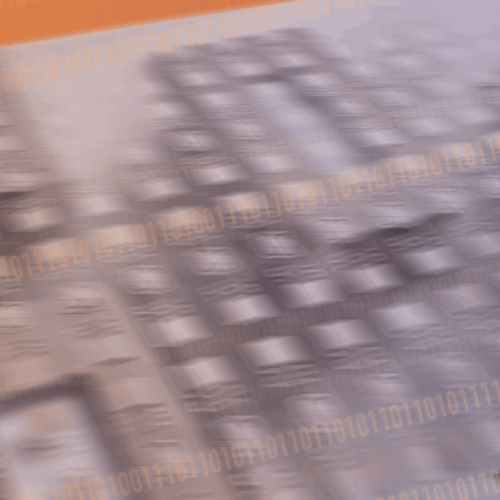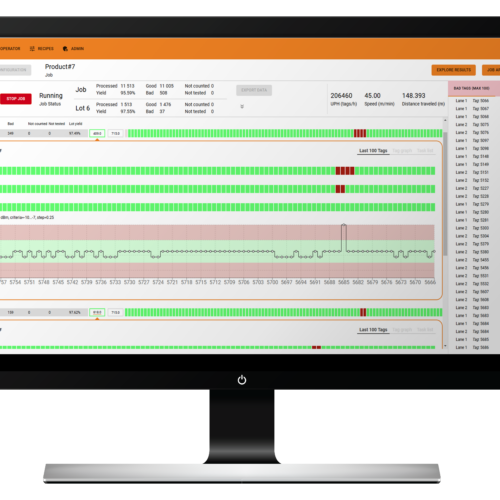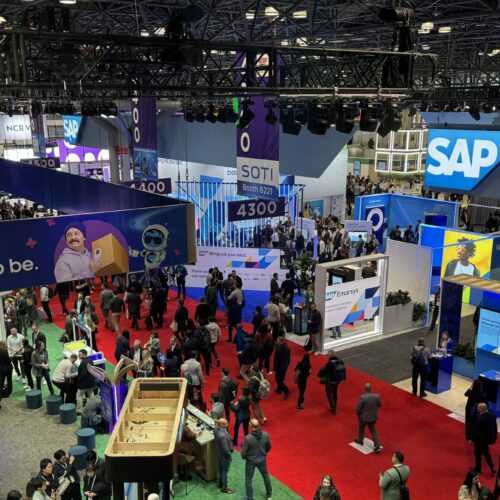I am frequently lecturing to RFID users and technology providers about quality and performance in RFID. Every now and then a question about the terminology comes up. RFID technology has developed through several paths and as a result there are a lot of names and definitions for RFID. A beloved child has many names, says a Finnish proverb. Understanding the different points of view in naming and the origins of the terminology help to understand the many names.
RFID and Frequency
RFID – Radio Frequency IDentification – is the umbrella term covering a wide variety of technologies: frequencies, communication protocols, and device types. One common way to refer to the different technologies is with the names of the frequency bands:
- LF RFID (Low Frequency RFID)
125 kHz – 134.2 kHz, 125 kHz RFID, 134 kHz RFID - HF RFID (High Frequency RFID)
13.553 MHz – 13.567 MHz, 13.56 MHz RFID - UHF RFID (Ultra High Frequency RFID)
433 MHz: 433 MHz RFID
858 MHz – 960 MHz: UHF RFID *) - Microwave RFID
2.4 GHz – 2.454 GHz: 2.4 GHz RFID
5.725 GHz – 5.875 GHz: 5.8 GHz RFID
*) Includes local bands ETSI RFID (865 MHz – 868 MHz) and FCC RFID or 915 MHz RFID (902 MHz -928 MHz)
Passive and Active RFID
Different RFID technologies feature different ways to power up the tags and to communicate between the reader and the tag. The base technology is used as one way to classify RFID:
- Passive RFID: technology where the tag powers up from the radio frequency energy sent by the reader, and communicates back by modulating the reader signal
- Battery assisted passive RFID, BAP RFID, Semi-passive RFID: technology where the tag gets its operating power from a battery but communicates back by modulating the reader signal
- Active RFID: technology where the RFID tag is powered from a battery and communicates by active transmission
- RFID sensor, sensor tag: a sensor (temperature, pressure, humidity – or anything else) is integrated into the RFID tag – can be passive, active or BAP
- Chipless RFID: tags without a silicon microchip based on time-domain reflectometry or frequency signature techniques are called chipless RFID tags.
RFID Names from Standards
Another approach for RFID naming comes from the radio transmission protocols. They are described in radio protocol standards, and are often referred to by the standard names: ISO 15693, ISO 14443-A, ISO 14443-B, ISO 18000-62, ISO 18000-63, GB T/29768…
The alphanumeric standard names are not that good for marketing use, so many of the standards are more widely known by commercial brand names, such as
- Mifare: NXP’s trademark for 13.56 MHz, ISO 14443-A
- FeliCa: Sony’s trademark for 13.56 MHz, JIS X 6319-4
- EPC RFID: Electronic Product Code, GS1’s standard family for data content in RFID, standard family includes also protocol standards and frequency standards – also standardized as ISO 18000-63 (formerly ISO 18000-6C)
- SINIAV: (Sistema de Identificação Automática de Veículos) Brasilian department of transportation’s system for identifying cars. The system includes also RFID protocol standard at UHF RFID frequency
Many of the standards have also been published by various organizations with no or with small adjustments. For example, it is common that a standard is published as a national standard (JIS, DIN,…) , or industry specific standard (IEC for example) and afterwards as a global ISO standard.
Marketing Names and Industry Organizations Aiming for Clarification
In order to fully describe a specific technology, several of the above names can (and sometimes must) be used together. For example: Passive 13.56MHz sensor tag with ISO 15693 protocol. Also several names are interrelated – for example ISO14443-A is in practice always also 13.56 MHz (HF RFID), and passive.
Using these technology derived names and standard names for describing the technology can be complicated, confusing, and in many cases drives the focus to the wrong direction. Industry organizations have recognized this problem and they have launched marketing names for most common technology combinations. Their focus is on the use cases instead of technical details and their goal is that these names would become the everyday names for RFID technologies – just like e.g. Bluetooth has become a common name for radio communication between electronics devices using 2.4 GHz frequency and ISO 802.15 standard protocol.
- NFC: Near Field Communication is a term/brand by an industry organization (link: http://nfc-forum.org/ text: NFC Forum popup:yes). The term describes a main stream combination of HF RFID technologies, and is used extensively in e.g. smart phones. The technology uses 13.56 MHz frequency and several protocols, such as ISO14443A, ISO14443B, and FeliCa (Japan Standard JIS X 6319-4).
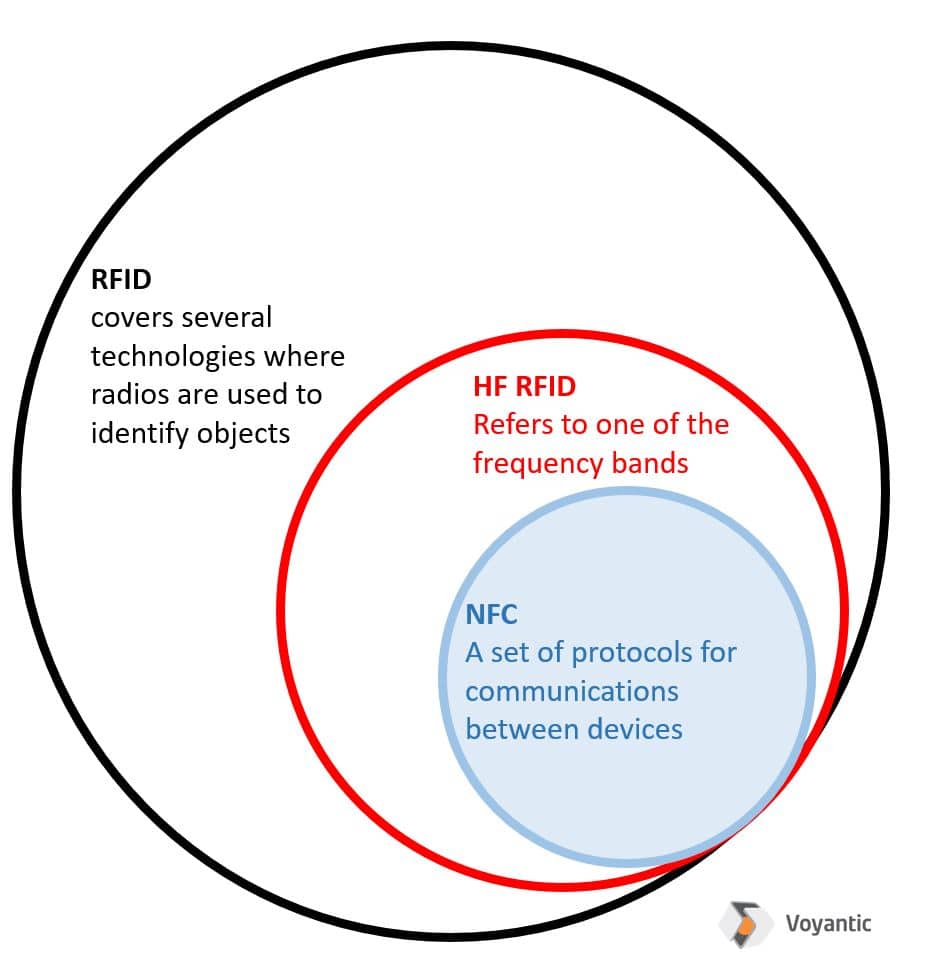
- RAIN RFID: RAIN RFID is a name coined by the RAIN RFID Alliance – a global cooperation organization of companies offering or utilizing passive UHF RFID. The RAIN RFID covers RFID technologies using frequencies from 860 MHz to 960 MHz and the EPC RFID Gen2 protocol, also known as ISO 18000-63 air interface, regardless of the used numbering system.
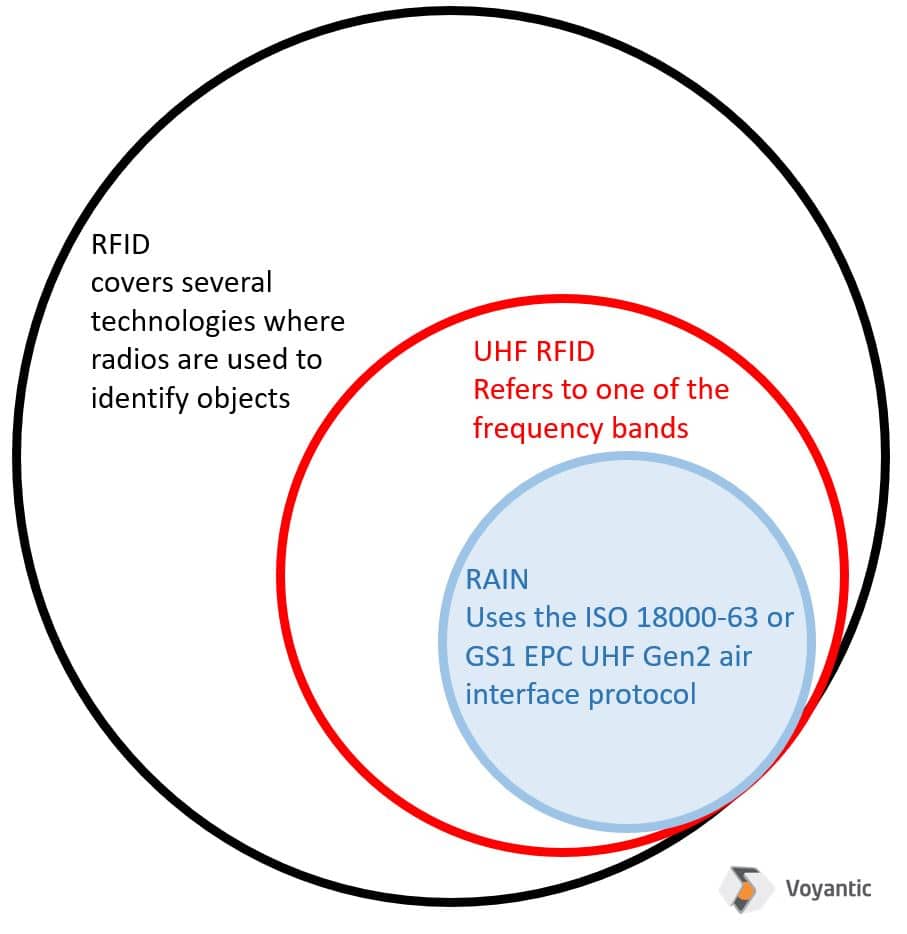
Which Names Should Be Used?
I am not ready to trash any of the current terminology. However, I have my own preferences.
I prefer the NFC and RAIN RFID terms in case studies and similar documents aimed for a wider audience when not focusing on nitty-gritty technical details but describing benefits of the technology.
When the focus is on certain technical viewpoints: protocol, frequency, technology type etc., I prefer the narrow technical terms. “Computer accessory for reading battery assisted UHF RFID EPC temperature sensor tags” sounds horrible, but actually describes quite well the technology solutions used. For a consumer the monster-term is not as easy as having a RAIN RFID enabled laptop.
Voyantic is a quality and performance test system provider for the RFID industry. The test systems can be used for testing tags and readers at UHF and HF RFID frequencies – or if you prefer – within RAIN RFID and NFC.
All blog posts
